Quiet changes to the South Dakota Department of Health’s Community Health Services and Women, Infants and Children programs have left many counties without resident community health nurses, exacerbating an already declining trend in some vaccinations across the state.
Clay County Board Chairwoman Betty Smith told South Dakota News Watch that the county reported zero vaccinations after the Department of Health restructured its community health department and told its staff they had the option of working under WIC or Community health departments work, but not both, as they once did.
When a Clay County nurse chose to work for WIC, suddenly no one was allowed to administer the vaccine.
“When mothers come in for WIC services, they are vaccinated, but the vaccine is not administered,” Smith said. “This is a system guaranteed to drive down vaccination rates.”

Clay County Vaccine Drought
Clay County now shares a community health nurse with neighboring Lincoln County. Smith expressed concerns about long-term effectiveness.
“Our county is tied to Lincoln County, and the nurses in Lincoln County are really, really busy and don’t have time,” she said. “We’ve had two nurse visits from the end of August to (the end of October) and we used to have three days a week of nursing.”
Smith said she was told nurses would not come to Clay County to administer single-dose vaccines but would have to bundle services with other clients on specific days. But limiting service availability to create more efficient vaccination days could create barriers for people who need services.
“For people who are working, they have to take time off work to go to these appointments, and they may not be paid,” Smith said. “If you live in poverty, you don’t have the ability to decide when you can go and do these things.”
Yankton County Commissioner Dan Klimisch agrees.
“When moms come to WIC, they can’t make vaccination appointments like they used to, so they have to spend more time to do that,” he said. “We just feel like we’re providing less services.”
Cut costs to meet changing needs
The Department of Health held multiple Zoom video meetings with commissioners to calm their concerns, telling them in a Nov. 6 call that the reorganization addressed “the evolving needs of our customers and the citizens of South Dakota,” while Also helps WIC programs stay within budget. Said it had exceeded $1.2 million.
“Our model for delivering WIC services in South Dakota is very unique and very different from any other state,” Katelyn Strasser, administrator of the Department of Health’s Office of Children and Family Services, told commissioners. “Our public health infrastructure started with WIC and was built around having nurses provide WIC services … and that can be very costly.”
Strasser told commissioners she hopes the service will no longer rely on federal aid or increased state aid.
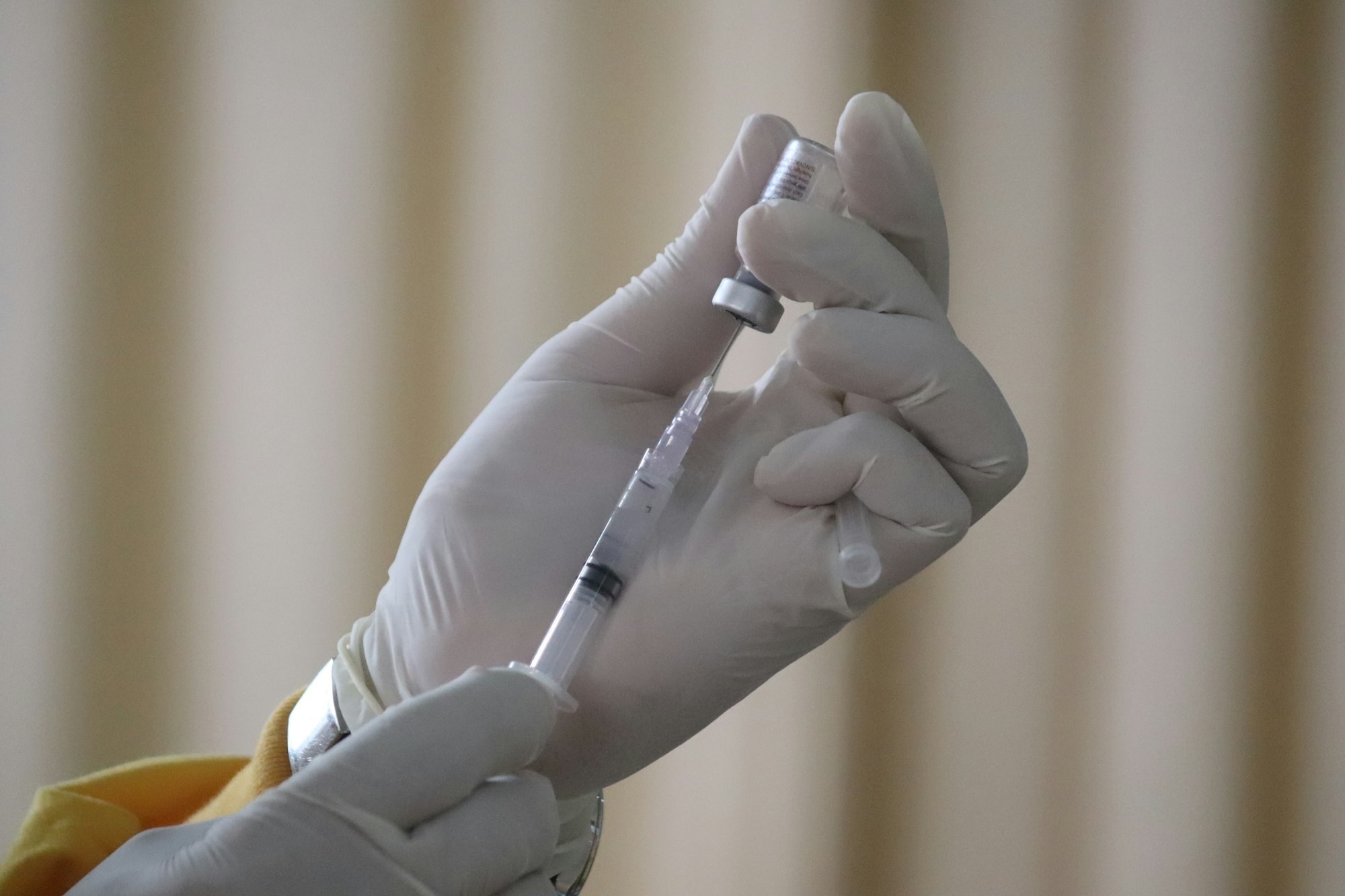
“We don’t want to ask the Legislature for general funds or other funding to supplement federal funding because we know we can stay within the budget,” she said.
According to the Department of Health, when nurses were asked to choose between working in community health or working in WIC, 18 chose WIC and 35 chose public health nursing. If a county’s community health staff chooses to work for WIC, the county may now share time with nurses from neighboring counties and lose the convenience of providing same-day immunizations and other health services to clients using WIC.

Counties are silent
Smith said she received no official information about the county’s changes and only heard weeks later that the county’s WIC staff was being reorganized.
“We don’t have anyone’s input in this reorganization, and I think that’s problematic,” Krimish said, telling NewsWatch that he also had received no official communication. “We should have a partnership with the state on county public health, and the county has an interest in public health and the well-being of its citizens.”
Don Kettering, chairman of the Yankton County Board of Commissioners, said he, too, has received no official word but is open to changes the health department is making.
“There are two ways to address the budget deficit, either from the revenue side or from the spending side,” Kettering told NewsWatch. “If you’re not going to raise property taxes and other taxes, if you’re going to continue to fund all of these things, it’s got to come from somewhere, and I think that’s their challenge.”
Krimish was less open to the changes and stressed the importance of providing good public health and preventive care.
South Dakota Statutes Chapter 28-13 requires counties to assist residents who are unable to pay for necessary medical care. He worries that more people will need relief as fewer services are available.
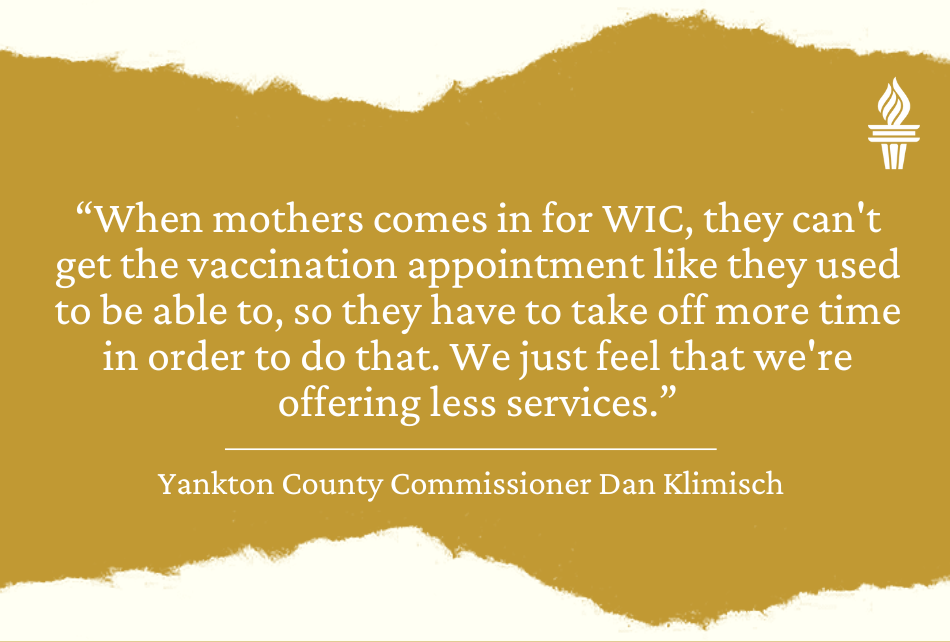
“The county is required by law to provide indigent relief, so when people are unable to pay hospital bills… under South Dakota’s written law, those hospital bills are typically paid by the county,” he said. “If people don’t get medical care ahead of time to address it, health issues, then health care costs may become more expensive in counties going forward.”
More services, but not all at once
The Ministry of Health said the reorganization does not amount to a reduction in services.
“I think there may be some misconceptions that we are eliminating public health nursing services, and maybe if a nurse in your county chooses to partner with WIC and now works full-time at WIC, you think you are receiving less public health services, which is not the case at all. Our intentions,” Strasser told the commissioners.
The Ministry of Health said the new services will complement the old ones. Telemedicine is a new focus, with mobile health units traveling to communities without a Department of Health location.
Additionally, by moving nurses to CHS or WIC, staff are no longer working in two different systems and are able to “focus on one area, allowing them to stay up-to-date on best practices, policies and procedures and assume consistent responsibility Caseload”. the Ministry of Health said.

Ministry of Health: Customers asked for this
The health department also told commissioners that clients feel they are “receiving too many services at once” and will go to WIC offices without realizing they will receive immunizations, pregnancy care appointments or other services that can extend their appointments.
“Having a nurse who can provide WIC, immunizations, screenings, prenatal care and risk assessment seems like a good idea. But we’re not really doing it in a client-centered way,” Strasser explain. “We often hear from customers that they want reduced services at the same time.”
Health Department officials declined to be interviewed by South Dakota News Watch and instead sent a statement from Health Secretary Melissa Magstadt.
South Dakota day care centers: Families forced to make tough decisions
The company is in desperate need of employees. But when families can’t afford child care, someone often stays home.
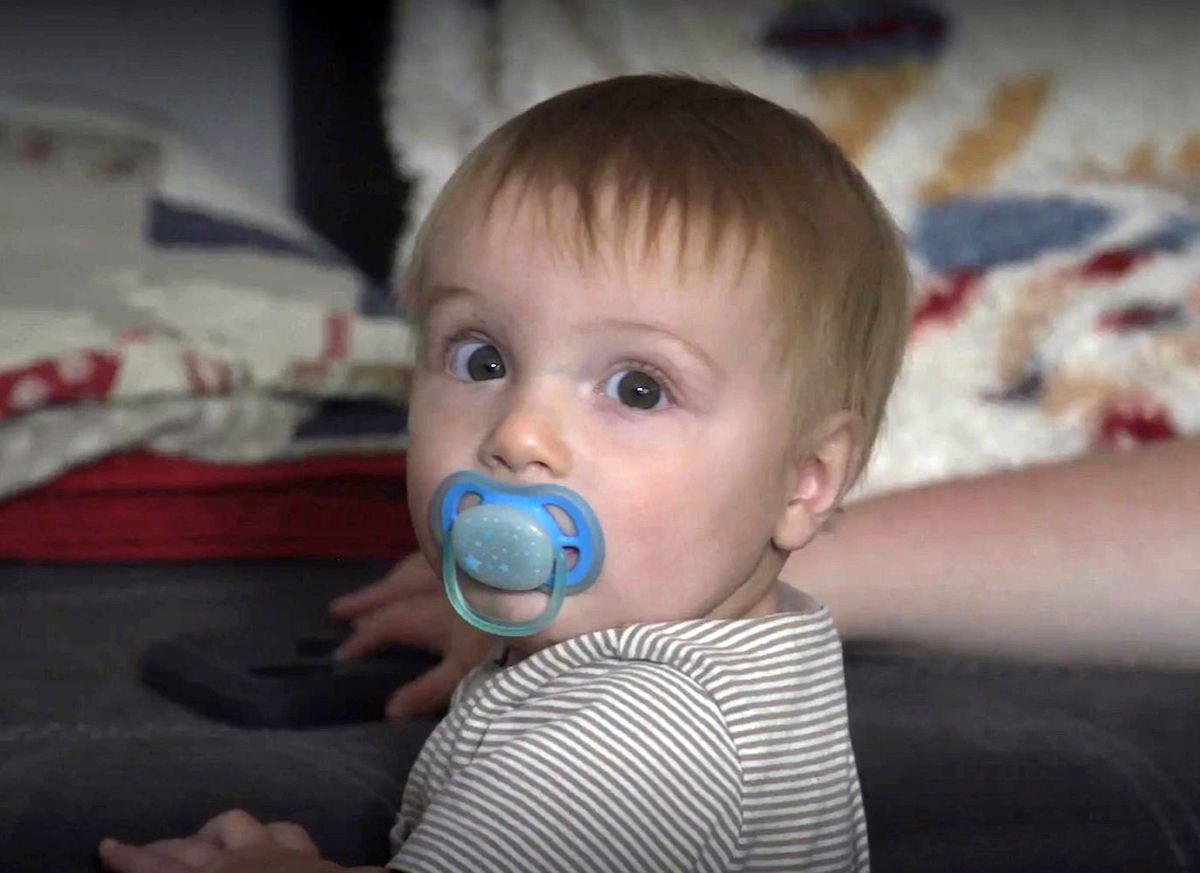
“Customer satisfaction surveys indicate they want different service delivery options and that receiving multiple services in the same appointment is cumbersome and time-consuming,” she said. “We put our friends, family and neighbors first. Based on their feedback, we knew we had to adapt our team to meet their needs and modernize how services are delivered.”
Strasser said shortening appointments will help require staff to take fewer breaks. But she didn’t mention the reduction in days of service or the possibility of needing two or more appointments to receive WIC and community health services. She also highlighted the push to schedule entire families into one appointment to increase efficiency.
“For people who want to go in and get vaccinated or do anything there, they need to take a day off and they’re going to have to come back and do other things because that part of what they’re asking for is not part of their time. access,” said Lake County Commission Chair Kelly Wollman.
Changes could shift spending to counties
Wolman did receive official information about the restructuring, and he worries that community health could be at risk if counties find the new setup to be less efficient.
“The WIC program is discretionary,” she said. “By law, the county does not have to do this… County health nurses are statutorily mandated, meaning expenditures for functions that state law authorizes but does not require the county to perform. It would be very sad if the county simply backed out due to For some strange reason.”
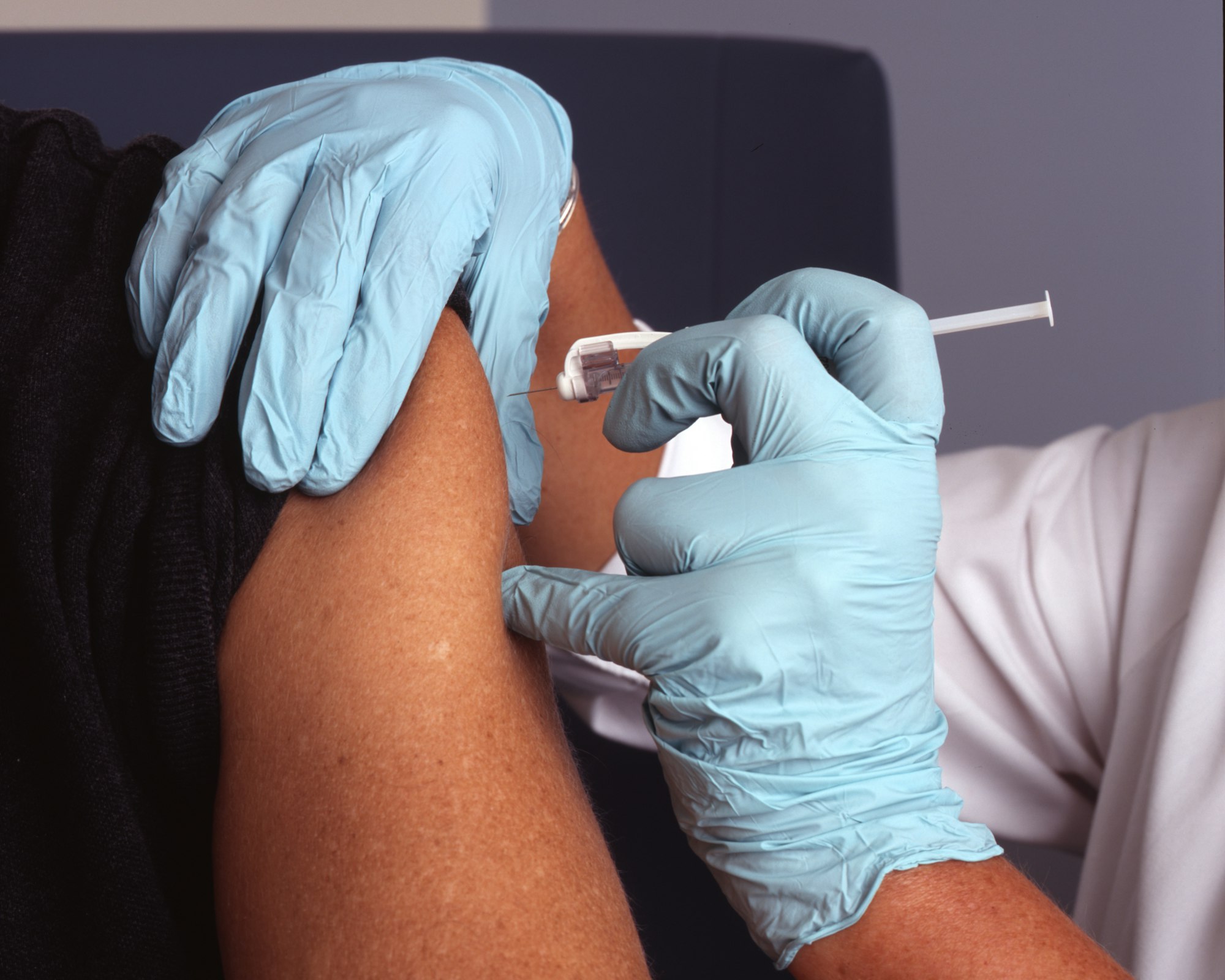
Krimisch is also worried about what will happen next.
“Historically, the state has just put these responsibilities on the counties, and we don’t have the financial means to pay for them,” said Krimish, who turned juvenile detention facilities over to counties without adequate funding. “It’s very disturbing and I wish that wasn’t what happened here, but that’s what it appears to be.”
Adding fuel to the fire
The changes come as childhood vaccination rates have declined in South Dakota.
The Ministry of Health’s School Immunization Dashboard shows vaccination trends for children entering kindergarten during the 2022-2023 school year are below the previous year’s levels and, with the exception of hepatitis A and B, are below pre-COVID-19 levels.
The state failed to meet the Centers for Disease Control and Prevention’s goal of 95% meal, mumps and rubella vaccine immunization coverage, down from 96% in 2019-2020, the Department of Health’s 2021-2022 report showed. 93.7% by 2021-2022.
This follows a nationwide downward trend in vaccination rates for children entering kindergarten, with the CDC reporting that from the 2020-2021 school year to the 2021-2022 school year, all vaccination rates fell by 0.8-0.9%.
South Dakota loses $100 million in food benefits after ending pandemic emergency
South Dakotans who rely on food stamps are missing out on $100 million in groceries as the state declares an end to the COVID-19 emergency while federal funds remain available.
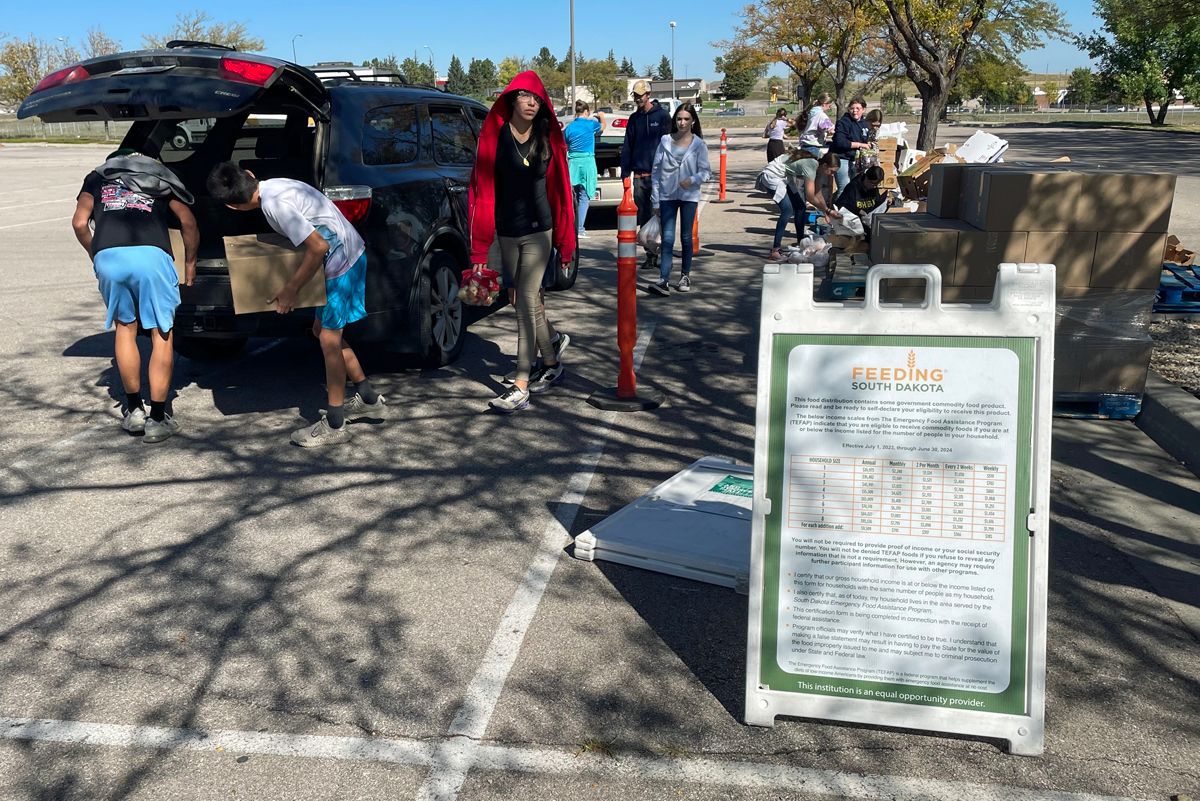
“We already have vaccines, but at the rate (vaccination is being rolled out), they’re going to expire before they can be used,” Smith said.
For Smith, the department’s focus on larger service areas simply takes “community” out of community health programs.
“In many ways, the magic of the community health program is that the nurses who live in the county serve the county and the women come to know them and trust them,” Smith said. “When a community health nurse says ‘it’s time for your child to get vaccinated’… they are more likely to actually get vaccinated because they are there. The problem is… we need to keep babies on the vaccination schedule and that makes things very difficulty.”

